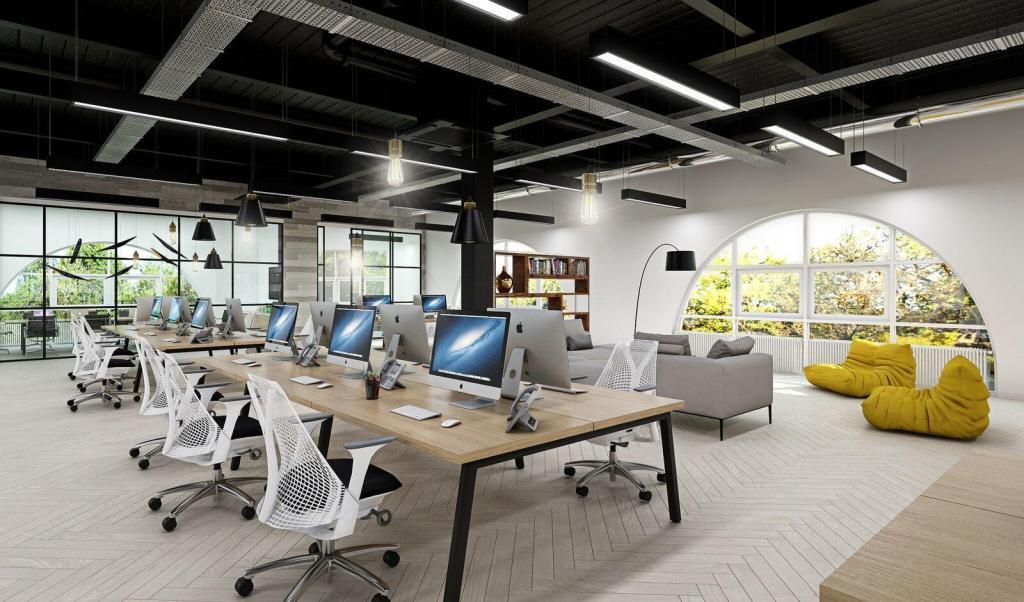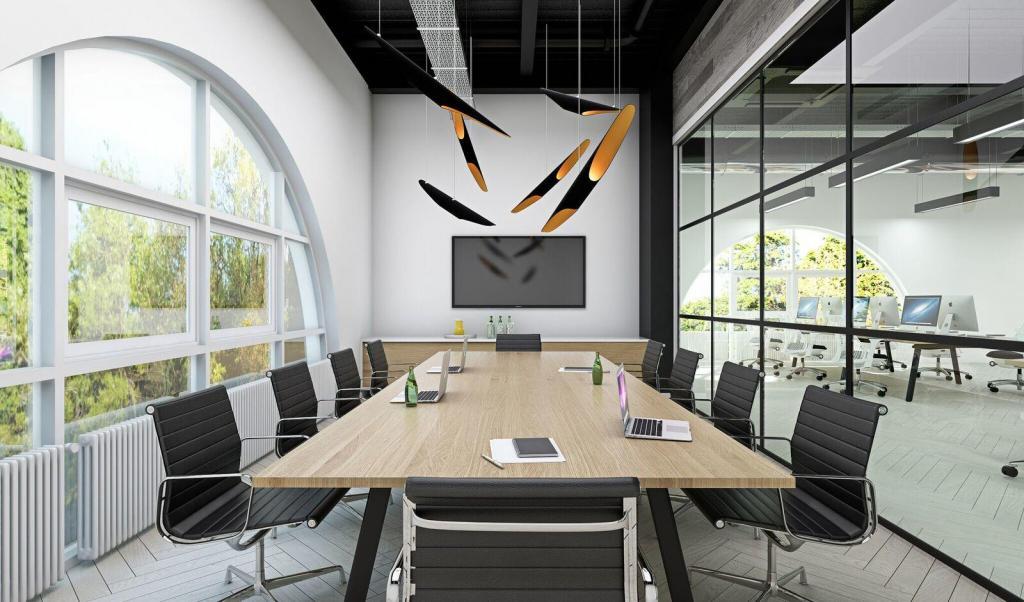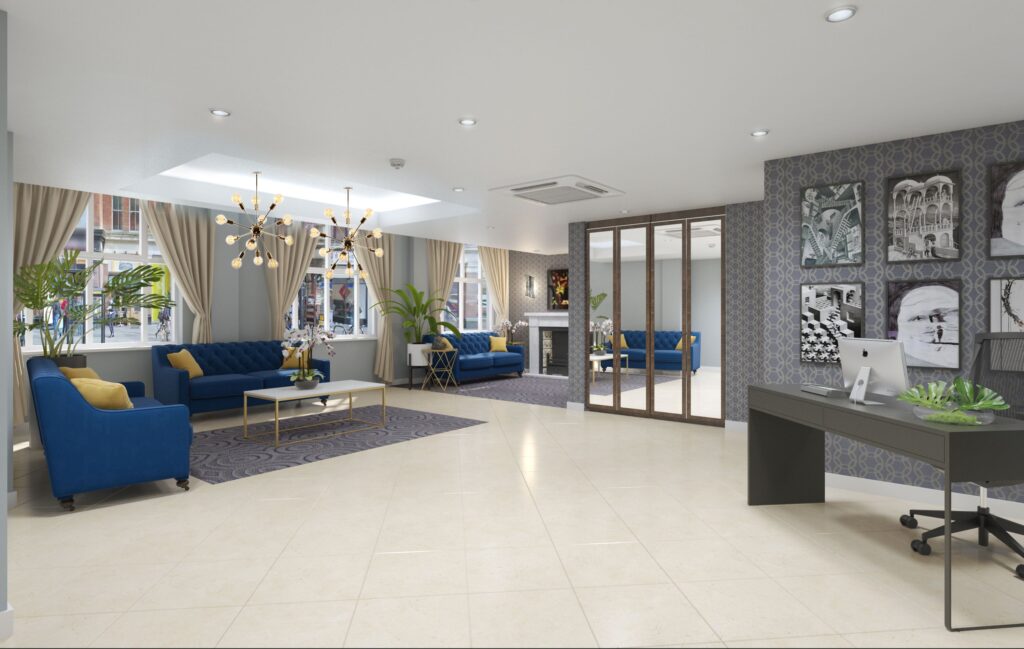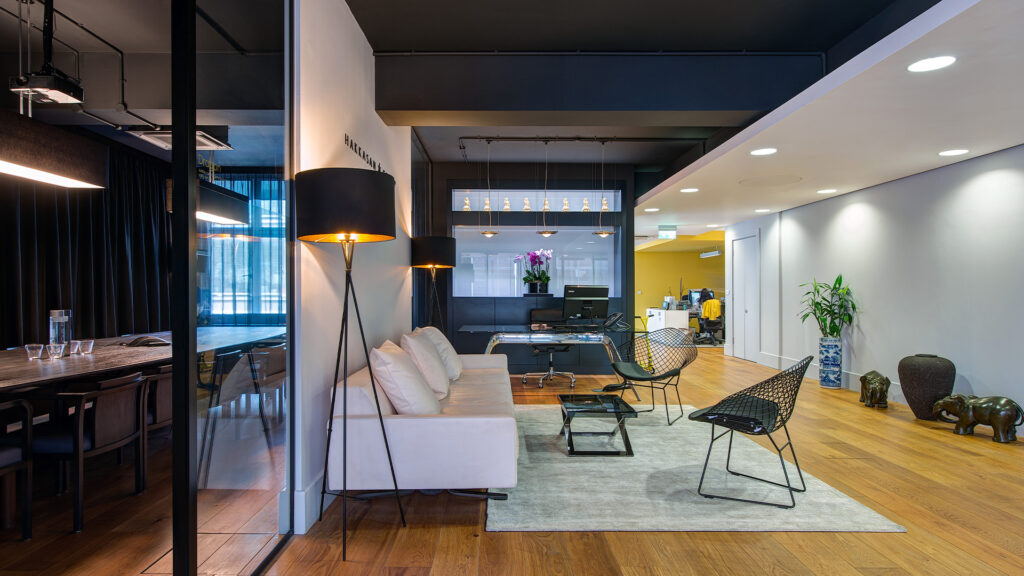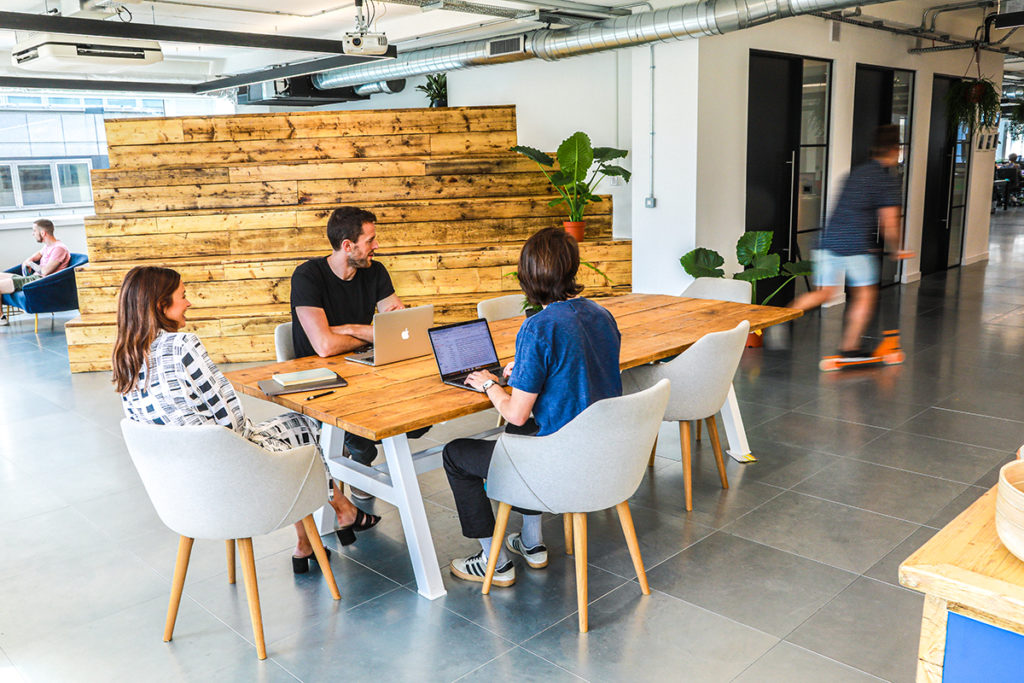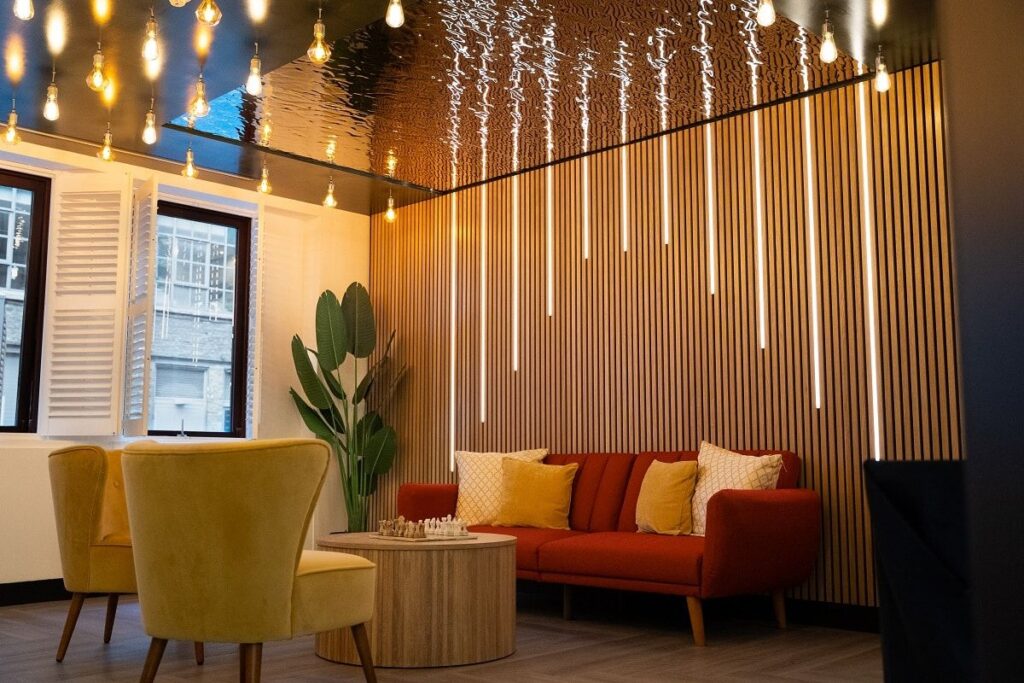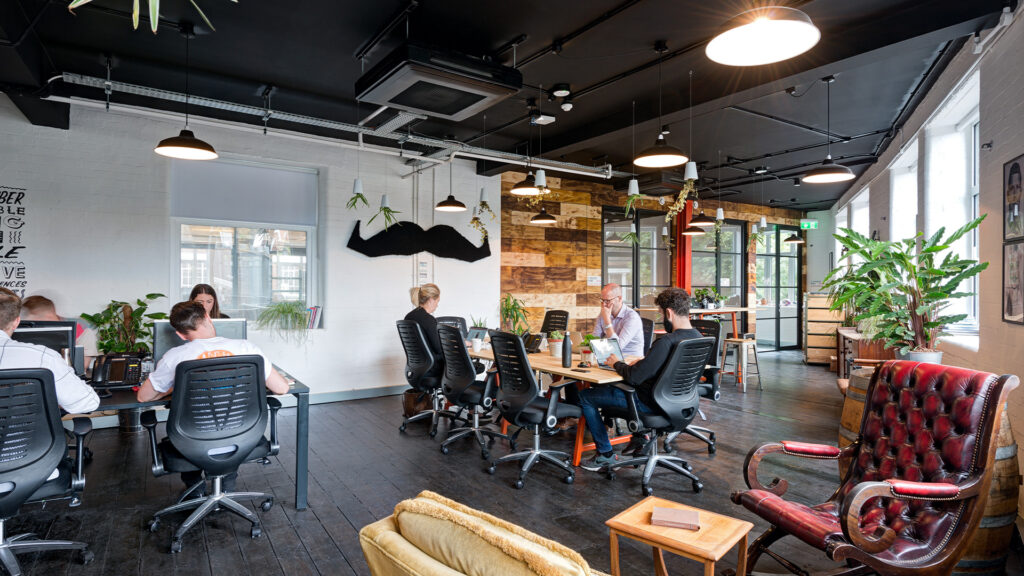Remote work, hybrid schedules, and changing employee expectations have fundamentally shifted how we think about office space.
Gone are the days when a workplace strategy simply meant arranging desks and meeting rooms. Today’s successful workplace strategy is a comprehensive approach that balances employee wellbeing, business objectives, and spatial design to create environments where people genuinely want to work.
Whether you’re planning a complete office redesign or looking to optimise your existing space, a well-crafted workplace strategy serves as your roadmap.
What Does Workplace Strategy Really Mean?
A workplace strategy isn’t just about choosing furniture or picking paint colours – though those elements matter. It’s a holistic plan that considers how your physical space supports your business goals, accommodates your workforce, and adapts to future needs.
Think of it as the blueprint that connects three crucial elements:
- Your people (who works there and how)
- Your place (the physical environment)
- Your processes (the work that gets done).
When these align properly, you create a workspace that doesn’t just house your business – it actively helps it thrive.
The best workplace strategies consider everything from daily workflows and collaboration patterns to employee retention and brand expression. They’re living documents that evolve with your business, not static plans that gather dust in a drawer.
The Building Blocks of Effective Workplace Strategy
1. Know Your Workforce Inside Out
Before you sketch a single floor plan, you need to understand your people.
- How do they work best?
- What are their pain points with the current space?
- Are they predominantly collaborative or do they need quiet focus time?
Conduct surveys, run focus groups, and observe how people actually use your existing space. You might discover that your expensive meeting rooms sit empty while teams huddle around kitchen tables, or that your open-plan office creates more distraction than collaboration.
Generational considerations
Consider the generational mix in your workforce, too. Gen Z employees often crave social interaction and learning opportunities, while experienced workers might prioritise quiet spaces and ergonomic considerations. A successful strategy accommodates these diverse needs.
2. Align with Business Objectives
Your workplace should be working as hard as your employees. If innovation is a key business goal, your strategy should include spaces that encourage creative thinking and spontaneous collaboration. If client-facing work is central to your success, impressive meeting facilities and professional presentation areas become priorities.
Budget considerations are equally important. A realistic workplace strategy acknowledges financial constraints while maximising impact. Sometimes a phased approach – tackling high-impact areas first – delivers better results than attempting everything at once.
Read more: How to Manage the Budget Without Breaking a Sweat.
3. Plan for Flexibility and Future Growth
The pandemic taught us that rigid workplace planning doesn’t weather uncertainty well. Build adaptability into your strategy from the start. This might mean modular furniture systems, technology infrastructure that supports both in-person and remote work, or spaces that can easily transition between different functions.
Consider your growth projections too…
- Will you be hiring significantly over the next three years?
- Are you likely to downsize?
Your workplace strategy should anticipate these changes and plan accordingly.
Designing Spaces That Actually Work
Activity-Based Working Zones
Modern workplace strategy embraces the reality that different tasks require different environments. Create distinct zones for various work modes: focused individual work, collaborative projects, informal meetings, and relaxation.
A successful layout might include quiet zones with comfortable seating for deep work, collaborative areas with writable surfaces and flexible furniture, and social spaces that encourage the informal interactions that build company culture.
Technology Integration
Your workplace strategy must consider how technology supports work. This goes beyond ensuring adequate power outlets – though that’s important too. Think about wireless presentation capabilities, video conferencing setups that actually work, and charging stations that keep mobile devices powered throughout the day.
The goal is seamless technology that enhances productivity rather than creating frustration. When people spend ten minutes at the start of every meeting wrestling with cables and connection issues, your workplace isn’t working.
Biophilic Design Elements
Research consistently shows that connections to nature improve wellbeing and productivity. Incorporate plants, natural light, and natural materials wherever possible. Even in urban offices with limited natural light, elements like living walls, natural textures, and views of greenery can make a significant difference.
This isn’t just about aesthetics – it’s about creating environments that support human psychology and reduce stress.
You might like this guide: Office Design Trends.
The Implementation Process
Phase 1: Research and Planning
Start with comprehensive research. Analyse how your current space is used, survey employee satisfaction, and benchmark against industry best practices. This research phase should typically take 6-8 weeks and forms the foundation for all subsequent decisions.
Engage stakeholders from across the business – not just facilities management, but HR, IT, finance, and department heads. Their insights will reveal needs and opportunities you might otherwise miss.
Phase 2: Design Development
Work with experienced workplace designers (hello!) who understand both spatial planning and business strategy. The design process should be collaborative, with regular checkpoints to ensure the developing plans align with your strategic objectives.
Consider creating mock-ups or visiting other offices with similar solutions. Seeing and experiencing different workplace concepts helps stakeholders make informed decisions about their own space.
Phase 3: Phased Implementation
Unless you’re moving to a completely new space, phased implementation usually works better than wholesale change. Start with areas that will deliver the biggest impact – often reception areas, meeting spaces, or key collaborative zones.
This approach allows you to test concepts, gather feedback, and refine your strategy based on real-world experience before rolling out changes across the entire office.
Common Pitfalls to Avoid
Don’t assume that what works for other companies will automatically work for yours. Silicon Valley tech companies popularised open offices and ping pong tables, but those solutions might be completely wrong for a financial services firm or legal practice.
Avoid over-designing social spaces at the expense of productive work areas. While breakout spaces and recreational areas are important, people still need to accomplish focused work. Strike the right balance for your specific workforce.
Finally, don’t underestimate the importance of change management. Even positive changes can create resistance if people don’t understand the rationale behind them. Communicate your workplace strategy clearly and involve employees in the process wherever possible.
Measuring Success
A successful workplace strategy delivers measurable results. Key metrics might include employee satisfaction scores, space utilisation rates, productivity measures, and even recruitment and retention statistics.
Regularly review how your space is performing against these metrics and be prepared to make adjustments. Workplace strategy isn’t a one-time exercise – it’s an ongoing process of optimisation and refinement.
Getting It Right
Creating a successful workplace strategy requires thoughtful planning, stakeholder engagement, and a clear understanding of how physical space impacts business performance. It’s about creating environments that don’t just accommodate work – they enhance it.
At CCWS, we’ve seen how the right workplace strategy transforms businesses. Spaces that align with company culture and employee needs become powerful tools for attraction, retention, and productivity. They’re investments that pay dividends in employee satisfaction, operational efficiency, and business success.





